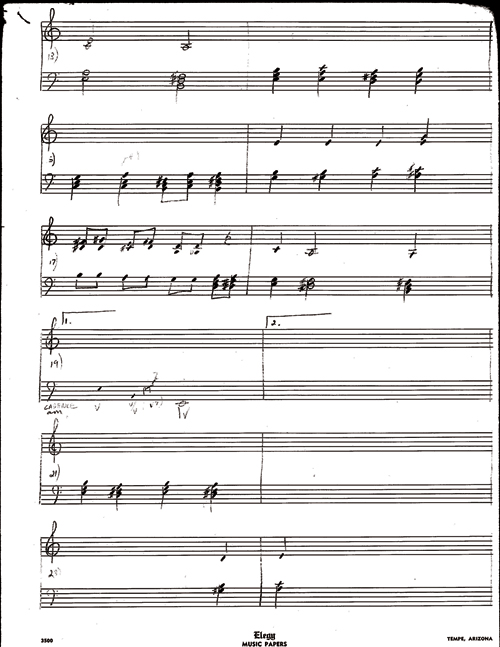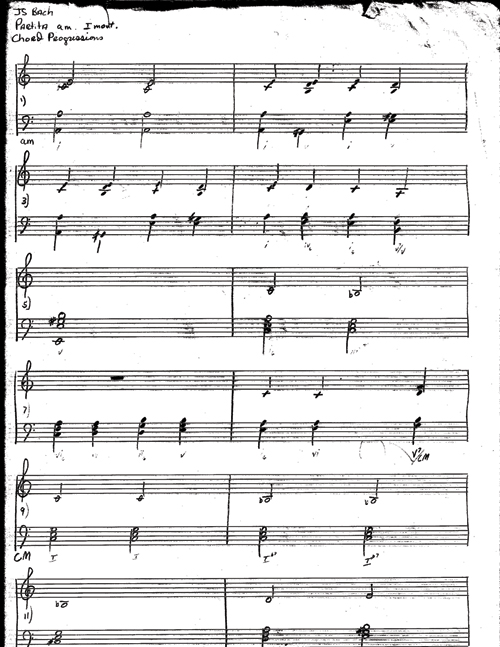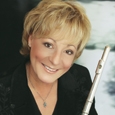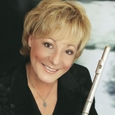When I was asked to contribute to this series, my first thought was “What makes a lesson, the best ever? A memorable lesson is one in which your ability to think about, practice towards, or perform from within is changed forever. Musicians encounter performers, conductors, and teachers who have profound influence upon them in rehearsals and performances, but what makes one lesson stand out from the rest. It might happen in a masterclass, a one-time lesson from a famous person, or a magical lesson from a long-standing teacher that was so off the charts that the relationship with this teacher was changed forever.
In a memorable lesson the information is given in a way that allows you to completely absorb it and use the information at that exact moment. The majority of lessons do not do that, and most of us go home and try to recreate what we thought was the deeper meaning of the lesson.
I have had so many wonderful lessons throughout my life in learning to play the flute. So as I began to choose my best lesson, I decided it had to be one that immediately changed what I was doing in the lesson. It had to be a dialogue where the explanation from the teacher was so clear that I knew exactly what to do. It also should be about what I was doing in the moment and about nothing else.
I thought about this for several days. What I thought would be an easy decision became harder and harder. While there have been great lessons where I learned a lot and was grateful beyond what I could pay, I wanted to choose one where I walked away from the lesson, totally blown away, holding so dear to my heart that I could not speak because my head was spinning with energy and creativity. The lesson I chose is one of several I would put in this category.
The summer after I graduated from Northwestern University with my master’s degree I attended my first summer festival. Since I had had to work the previous summers to pay for school, this would be my first adventure. I chose to attend the New College Festival in Sarasota, Florida. A fellow classmate was Linda Chesis. Her beautiful playing made an impression on me so I decided I wanted to study with some of her teachers. When she told me about Sam Baron, I knew I had to get a lesson with him. After the festival, I wrote him a letter asking for a lesson, and he invited me to New York. This must have been around 1976 or 1977.
After I arrived in New York from Chicago, I took the train to Baron’s home. To say I was nervous was an understatement. I wanted his help with J.S. Bach’s Solo Partita in A Minor. I soon relaxed as I realized that Baron was committed to Bach’s music and making sure I understood it.
Baron began by analyzing the first movement (Allemande) and asked me what chord accompanies this solo melody and what the chord function was. It was the first time I had ever had a teacher do this kind of structural analysis. To this day when I practice Baroque music, these are the first questions I ask myself. He then played the chords on the piano and helped me identify the non-chord tones in the melody. After this we worked on the music and focused on direction and phrasing, style, and ornaments. As you can see from the fragment of the manuscript (below) I still have, the chord symbols shaped the direction of the form, while the printed arpeggiated notes shaped the contour of the musical line.


A good practice idea is to play the chords while singing the flute part at a variety of tempos. Watch what happens to your sense of flow in the music.
Review your harmony classes playing close attention for chord progressions. Learn which cadences were masculine (ending on a strong beat) and which were feminine (ending on a weak beat). This will help you shape dynamics, color choices and rubatos. This fragment is all I have left, but I encourage you to write out the entire first movement with the Roman numeral accompaniment. Along with knowing the general practices of the period, it is the music that must flow.
The process was so simple and so complete, that when the lesson was over I felt Baron had very simply given me a profound gift of knowledge. I wrote about this lesson all the way home.
To this day when I teach the Bach Partita, I see Mr. Baron’s faded and tiny handwritten chord symbols on my part. I don’t remember everything he said, but what I do remember is how I felt when I left his home. This lesson did not just teach me to be a better flutist, but it showed me how to be a better musician. That lesson was profound, memorable and great. There was no fear, no worries, no stress – just a dialogue between two people, one of whom had the knowledge to share and the other eager to absorb this knowledge.
I have been very lucky in my life to study with some amazing people. I am thankful for the ones who gently helped me along the way. Some were tough and at times downright frightening. However, I always came to the lesson ready to work hard and learn. I never felt it was the teacher’s job to give me the answers, but it was my job to come prepared and earn that exchange of knowledge. I have always felt at any given moment in your life there is a teacher out there someplace who can help you. It is up to you to seize the moment and find that person.






